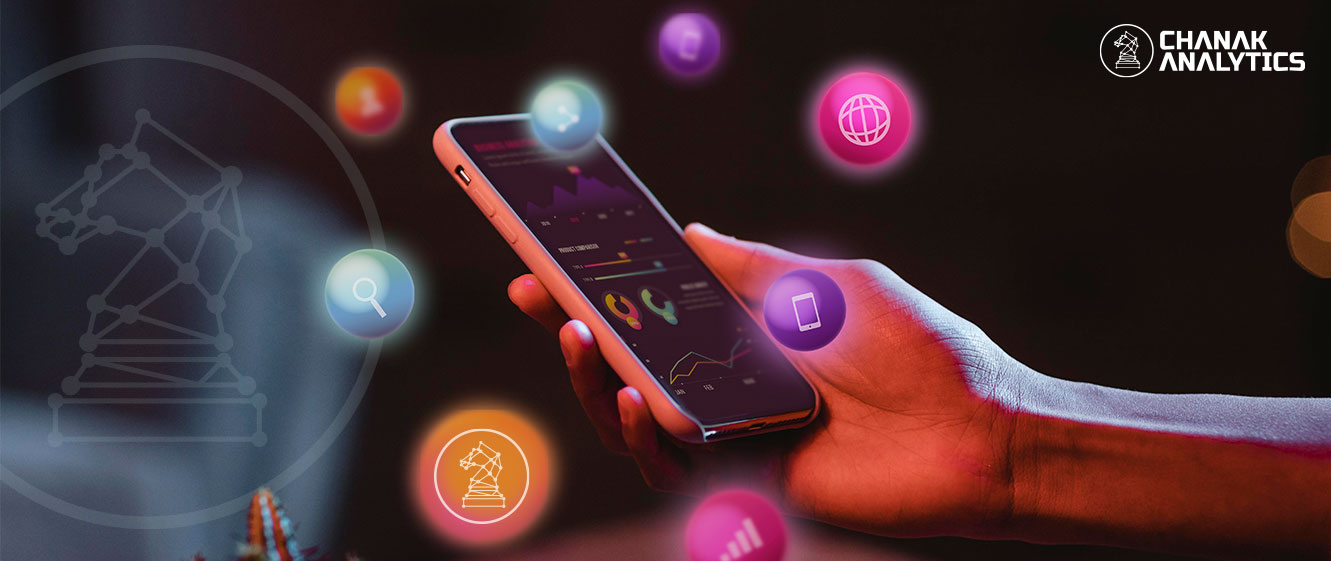Mobile Applications Development: An Insider’s Guide to Success


Mobile apps are the biggest hit of our existence right now. Starting with just booking a cab to heading out for shopping. Mobile apps make our lives easier than ever. The International mobile app industry is roaring. As per the statistics, 204 billion app downloads let alone in 2019.
In such a booming piece of cake, one has to take a bite. Mobile apps are a great opportunity for a company’s business prospects and growth. But when it comes to mobile application development, there are various approaches that developers can take.
If you’re considering developing a mobile app, it’s essential to choose the right approach based on your specific requirements and resources. Whether you opt for a native Android app or collaborate with a cross-platform app development company.
Understanding the pros and cons of each option will help you make an informed decision. Join us on this journey as we uncover the intricacies of developing compelling mobile applications. Whether you are an experienced developer looking to expand your skillset or a beginner venturing into the world of mobile app development, this guide will serve as your go-to resource.
The Significance of Mobile Applications in Today’s Digital Landscape

There is nothing more essential than being relevant in the industry. And, Mobile Apps are your key to staying in business and growing exponentially. One has to have the knowledge required to create innovative and engaging apps that cater to a wide range of users across various platforms.
Here, you will learn about the significance and importance of Mobile Phones and how are they useful in today’s scenario.
- Increased Usage of Mobile Phones
- Convenience associated with Mobile Usage
- Access and Frequent Notifications are a Way
- Secured Payments and Payouts
Leading Factors for a Successful Mobile Application Development
Developing a successful mobile app is essentially your way of creating something new and exciting. Here, are the key factors for any mobile application development:
• Core app features and functionalities of the App
Focus on making the app as effective as possible. A thorough market would help identify competitors and gaps in the market. This would help in analyzing user feedback and reviews for similar mobile development services to learn from their strengths and weaknesses.
• User-Centered Design for Target Audience
A mobile app prioritizes user experience (UX) and user interface (UI) design. Designing a visually appealing, intuitive, and user-friendly interface is crucial to creating a successful mobile app. To achieve this, it’s important to keep your target audience’s preferences in mind and define clear objectives for your app. A thorough understanding of your target audience’s specific needs and preferences can be extremely helpful in achieving your objectives.
• Market Strategies after the Launch
There are primarily three steps-user acquisition, retention, and growth. Thorough testing, including unit and user acceptance tests, is crucial for maintaining a well-functioning mobile app.
Understanding the Target Audience and Their Needs
To ensure the success of an app in the market, developers must conduct extensive market research to understand their audience. This step is essential in building a fully functional app that aligns with the business goals. Additionally, the app’s value proposition should be in sync with the company’s objectives.
To make that a possibility, one should use the following steps: Surveys, interviews, competitor analysis, and user testing beforehand.
Choosing the Right Mobile App Development Platform
Whether you choose a Native, hybrid, or cross-platform app, the decision should consider a few other things. Most importantly, your budget, intent of your app, and target audience.
• Native Apps
Developed specifically for a mobile OS like iOS or Android. Whereas, Cross Platform App Development caters to both. But they require dedicated development efforts for each platform. Native app development can be more expensive than cross-platform development. Native apps are built specifically for one platform (iOS or Android), requiring a separate development team.
• Cross-Platform App
Works best with React Native, Flutter, and Xamarin. This is for both iOS and Android together. Hence it helps a lot in saving time and resources. Cross-platform development often results in faster development cycles because you can reuse a significant portion of your codebase across different platforms.
• Hybrid App
Utilizes Web Languages like HTML, CSS, and JavaScript Mobile Apps bunched in a native parameter. This is an equilibrium between native apps and mobile. Hybrid platforms often offer faster development times compared to native development because you can write code once and use it on multiple outlets.
Design considerations for mobile applications

For designing a mobile application one has to look into the following:
1. User Experience and Visual Appearance
User feedback into iterations is important for UX improvement. It impacts the user experience and it should be implemented with the UI design.
- Intention and Purpose of the Mobile App
- Proper Style for icons and buttons
- Clean layouts for visual hierarchy
- Fonts and colour scheme for better readability
- Easily Navigable and Fast
2. Essential Features and Functionality for mobile applications
- Simple interface for user accounts during the login/signup procedure
- Better Navigation menus and flows for enhanced User Experience
- Push notifications and contextual help with tutorials
- Super Fast information access with filter and search option
- App analytics for integrating usage
- Personalizations made by the User
- Availability of offline usage for the App
3. Testing and Debugging Mobile Applications
This is one of the most essential steps before or even after launching an app. Testing assures performance and also looks into loopholes left out during the development process.
- Different Loads and Network Conditions for Performance Testing
- Testing functionalities for UI and backend integrations
- Testing Usability with real-time users to improve UX mistakes
- Cross Platform App requires testing with different OS version and devices
- Adapting to different languages with Localization
- Security Checks for any Risk Factor
App Store Optimization and Marketing Strategies
ASO and marketing techniques help apps stand out in the App Store. It is challenging with over 5 million apps waiting for user attention in the app store. This is what you should do after the app launches.
Social Media with Content Marketing
Post on popular social media platforms to engage with your audience. Share updates, promote user-generated content, and run paid ad campaigns to reach a broader audience.
PR Relations and Influencer Marketing
Public Relationship marketing involves reaching out to journalists and bloggers who are capable of promoting your Native Mobile App. Whereas, Influencers are people who do the job with their means of social media posts.
Email Marketing and Referral Programs
This includes sending direct emails to potential users. People who use competing applications can turn into your app user. Otherwise, existing users refer their friends and family members with the means of a Reward system.
Post-launch Maintenance and Updates
- Fast Customer Support and Feedback
- Updates for Improving Performance
- Relevant and Regular Content Posting
- Data Analysis of App Analytics
- A/B Testing and Quality Assurance of the App
Case Studies of Successful Mobile Application Development Projects
This Apps made it! Here, we have some of the most popular apps on the internet that made their way into the rank of popularity and fame. These apps are renowned across the globe for their vast user interface and usage.
WHATSAPP & INSTAGRAM:
We have to mention WhatsApp which is now owned by Meta. And also Instagram which focused on intuitive and appealing photo-sharing UX.
UBER:
If you’re talking about booking a cab, then Uber is simply a synonym now. They utilized Google Maps for smoother logistics and tracking. Localization and global expansion were strategic usages of Maps and bookings.
Resources and tools for mobile application development
Multiple resources and tools can support mobile app development. Here, are the Top 12 Tools for Mobile Application Development
- Android Studio: The official integrated development environment (IDE) for Native Android app development, offering tools, emulators, and more.
- Firebase Crashlytics: This is used for crash reporting tools like for bug tracking
- TestFLight: This is used for Beta testing services for UX testing pre-launch
- OneSignal: This is used for Push notification services for retention
- Xcode: The IDE for iOS app development, providing a comprehensive set of tools for building, testing, and debugging iOS apps.
- React Native & Flutter: Popular JavaScript framework for building cross-platform mobile apps with a single codebase. It is a toolkit that is used for building native mobile applications, web, and desktops from a single codebase.
- Photoshop, Sketch & Figma: This is used for UI design mockups
- App Annie & Sensor TowerApp: These are used for App Store analytics for market insights
Conclusion
Global Outreach and Future Prospects of Mobile technology continue to evolve, opening up new possibilities for innovation. Such a Javascript Mobile app can easily reach a global audience, breaking down geographical barriers. This makes them an essential tool for businesses looking to expand internationally.
Alternatively, cross-platform app development has gained traction in recent years. By utilizing frameworks like JavaScript, developers can create mobile apps that work across multiple platforms, saving time and effort. This approach is particularly beneficial for businesses looking to reach a wider audience without the need for separate development processes.
Join the community
Join our 400,000+ person community and contribute to a more private and decentralized internet. Start for free.


